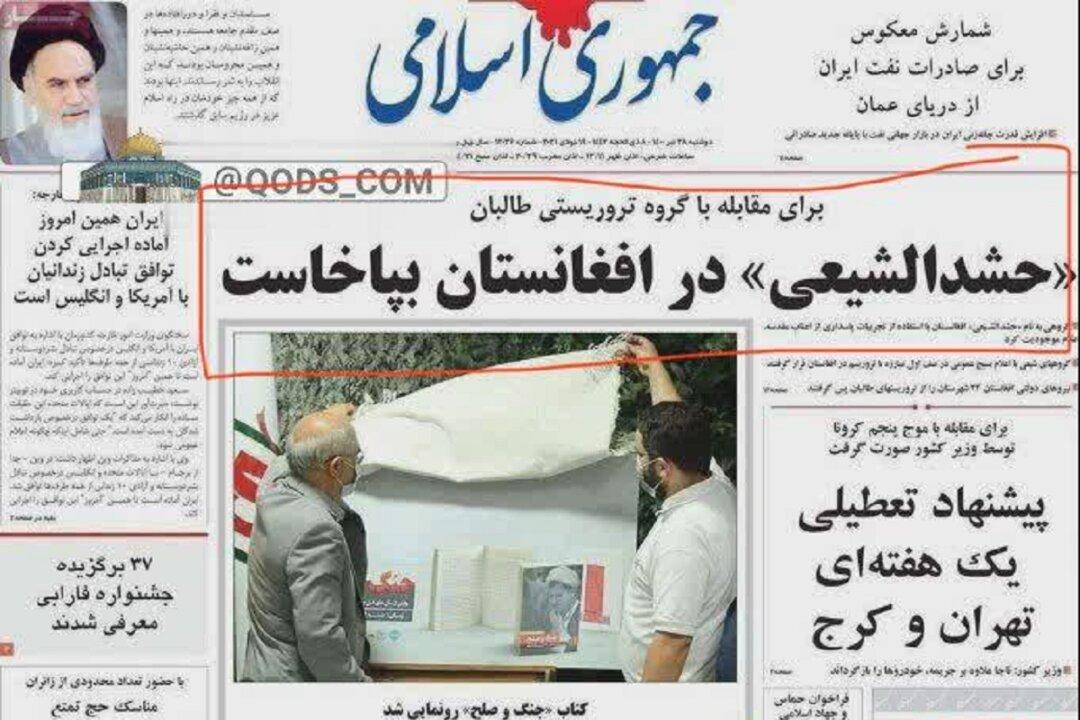Iran has called on a Shiite proxy force to “rise up” and fight against the Taliban terrorist group, according to Jomhouri-e Eslami, a newspaper owned by the Iranian regime, in a front-page story on July 19.
The newspaper, whose editor-in-chief is appointed by Iranian Supreme Leader Ali Khamenei, reported that the new militia, Harshad Al-Shiite, will fight the Taliban.





